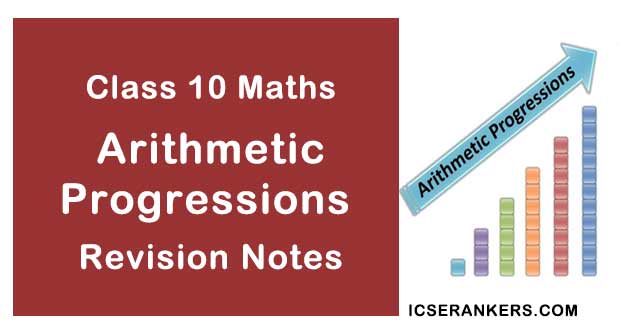NCERT Notes for Class 10 Maths Chapter 5 Arithmetic Progressions

Class 10 Maths Chapter 5 Arithmetic Progressions Notes
Chapter Name | Arithmetic Progressions Notes |
Class | CBSE Class 10 |
Textbook Name | NCERT Mathematics Class 10 |
Related Readings |
|
Sequence
A sequence is an arrangement of numbers in a definite order and according to some rule.
Example: 1, 3, 5,7,9, … is a sequence where each successive item is 2 greater than the preceding term and 1, 4, 9, 16, 25, … is a sequence where each term is the square of successive natural numbers.
Terms
The various numbers occurring in a sequence are called ‘terms’. Since the order of a sequence is fixed, therefore the terms are known by the position they occupy in the sequence.
Example: If the sequence is defined as

Arithmetic Progression (A.P.)
An Arithmetic progression is a special case of a sequence, where the difference between a term and its preceding term is always constant, known as common difference, i.e., d. The arithmetic progression is abbreviated as A.P.
The general form of an A.P. is a, a + d, a + 2d,…
For example:
1, 9, 11, 13.., Here the common difference is 2. Hence it is an A.P.
In an A.P. with first term a and common difference d, the nth term (or the general term) is given
by .
an = a + (n – 1)d. …where [a = first term, d = common difference, n = term number
Example:
To find seventh term put n = 7
∴ a7 = a + (7 – 1)d or a7 = a + 6d
The sum of the first n terms of an A.P. is given by

where, 1 is the last term of the finite AP.
If a, b, c are in A.P. then  and b is called the arithmetic mean of a and c.
and b is called the arithmetic mean of a and c.
